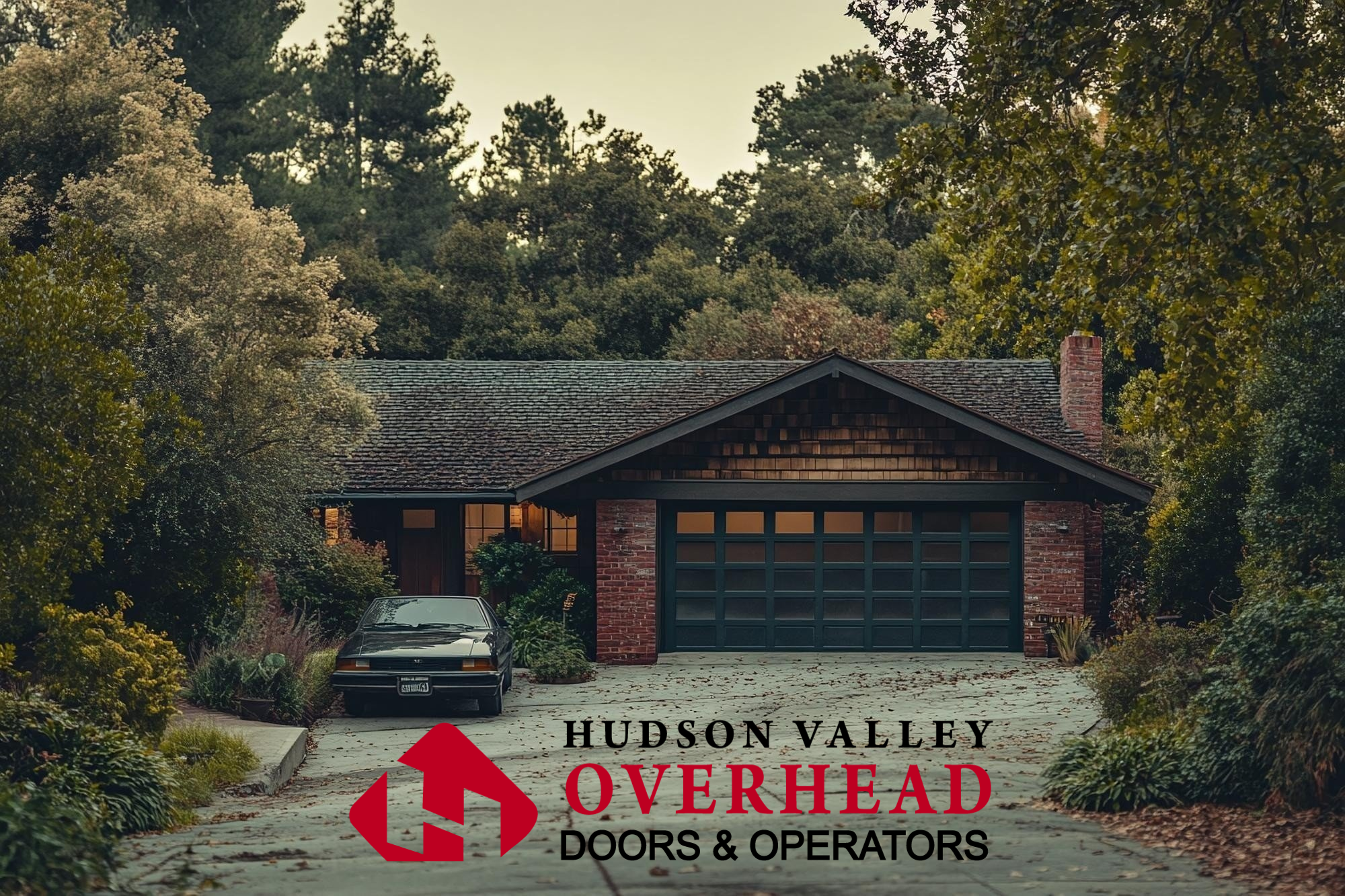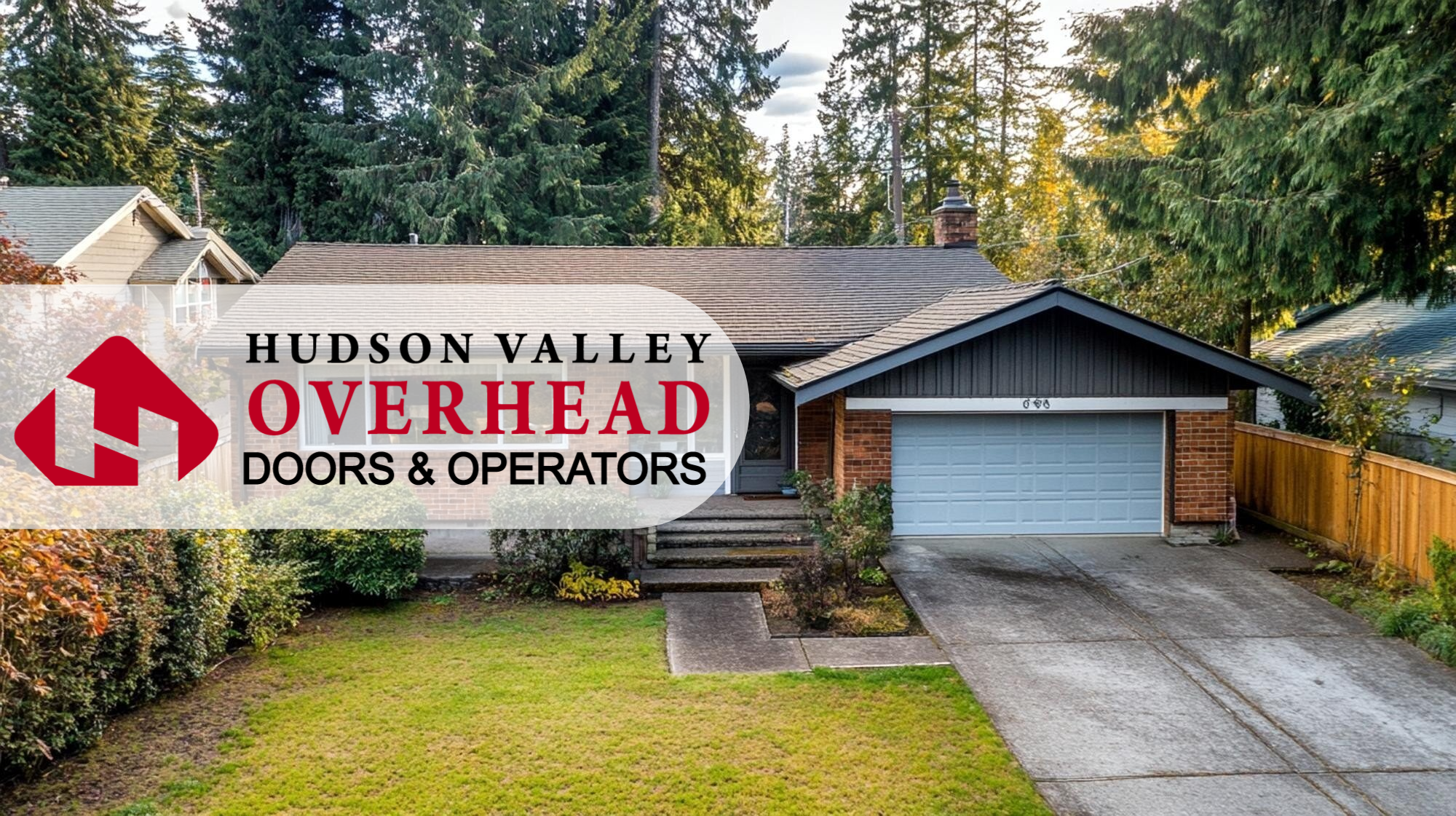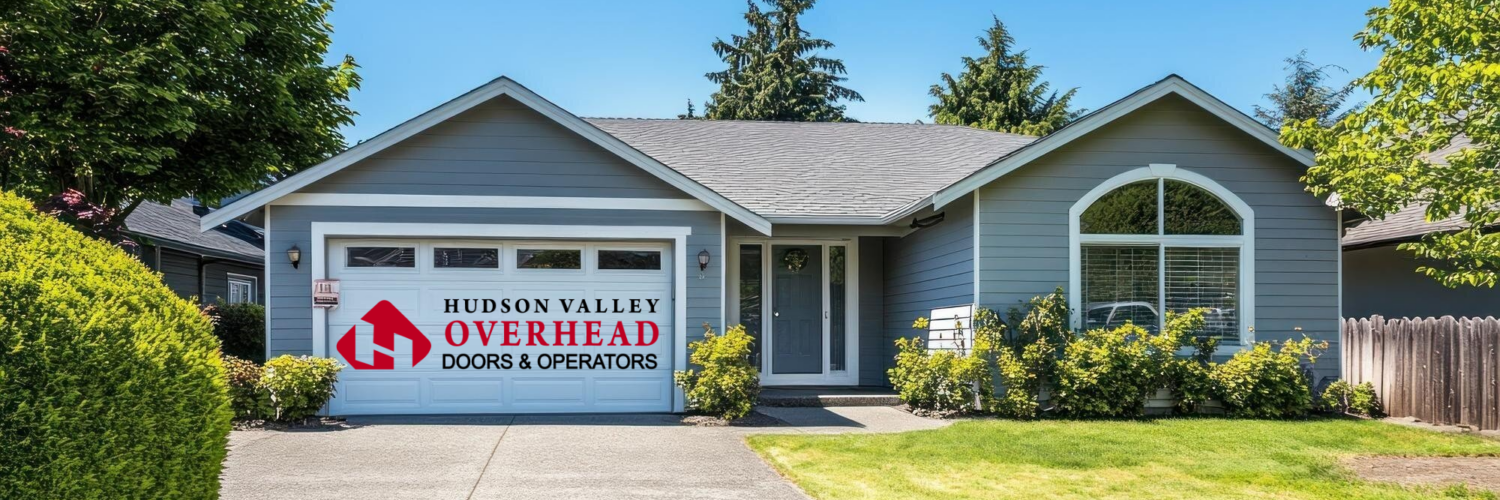Curb appeal has long been recognized as a decisive factor in real estate, influencing not only property value but also tenant interest and occupancy rates. For rental properties in Dutchess County and across the Hudson Valley, garage door design has emerged as a particularly important element of exterior presentation. Beyond landscaping and exterior paint, tenants and prospective buyers increasingly evaluate the quality and style of garage doors as part of their overall impression of a property.
While often overlooked, the appearance, function, and safety of garage doors contribute significantly to first impressions, operational reliability, and long-term return on investment. A well-chosen garage door can enhance architectural harmony, improve energy efficiency, and provide an added layer of security, all of which directly affect marketability. In competitive rental markets like Dutchess County and the broader Hudson Valley, property owners who invest in modern, durable, and visually appealing garage door design often see higher occupancy rates, stronger tenant retention, and better overall asset performance.
Garage Doors as Architectural Features
Garage doors today extend beyond utility. In many mixed-use developments, retail storefronts, and residential rentals, they act as prominent architectural features that shape both the aesthetic appeal and the functional identity of a property. Their size and visibility can either elevate or diminish a building’s overall design, making them one of the most noticeable elements of curb appeal in Dutchess County and across the Hudson Valley.
Material choices such as steel, aluminum, or composite panels influence durability and style, allowing property owners and developers to align garage door design with long-term performance goals. Steel remains a popular choice for its strength and security, while aluminum offers a lighter, contemporary look with resistance to rust. Composite panels, on the other hand, provide a balance of durability and versatility, often mimicking the appearance of wood without the maintenance challenges.
Color and finish options also play a crucial role in design integration. A carefully selected garage door can seamlessly complement surrounding structures, whether blending with traditional brick façades, accentuating modern glass exteriors, or providing a bold contrast that draws attention to the property’s entry points. Matte, glossy, or textured finishes further enhance visual impact while offering property managers flexibility in expressing brand identity or neighborhood alignment.
Beyond surface appearance, customization elements like window inserts and paneling open opportunities to enhance natural light and ventilation while maintaining security. Frosted or tinted glass windows, for example, introduce daylight into interior spaces without compromising privacy, making them a practical yet stylish feature for residential and commercial use alike. Decorative paneling can also create a sense of depth and craftsmanship, elevating a garage door from a simple functional component to a statement piece within the property’s exterior design.
Industry experts, including Hudson Valley Overhead Doors & Operators, have noted that modern garage door design is increasingly considered during early planning stages of commercial and rental property development rather than treated as an afterthought. This proactive approach reflects a growing recognition of garage doors as integral to both architecture and investment strategy. Developers and property owners who prioritize thoughtful garage door selection often gain an edge in tenant attraction, property valuation, and long-term marketability.
Functional Design Meets Curb Appeal
While aesthetics are central to curb appeal, functionality remains paramount in rental property management. For both residential rentals and commercial facilities, the ability of a garage door to combine visual appeal with practical reliability is critical to tenant satisfaction and long-term return on investment. Roll-up gates for commercial properties and traditional sectional doors alike must strike a balance between security, ease of use, and compliance with building codes. In competitive markets like Dutchess County and the Hudson Valley, this balance often becomes a defining factor in how properties are perceived and valued.

Key Functional Considerations
Security integration: Many rental facilities require garage doors with advanced locking mechanisms and compatibility with building-wide access systems. Biometric entry, keyless access, and integrated alarm systems are no longer luxury features but expected safeguards in multi-tenant environments. A secure garage door not only protects physical assets but also contributes to tenant trust and overall occupancy stability.
Durability: High-traffic locations, such as warehouses, storage units, and multi-tenant retail complexes, depend on garage doors that can endure frequent cycles without failure. Choosing durable materials, reinforced steel, insulated aluminum, or heavy-duty composites, ensures that garage doors remain reliable even under continuous operation. This durability directly reduces replacement costs and unplanned service interruptions, making it a vital investment consideration for property managers.
Maintenance requirements: Property managers seek designs that minimize downtime and lower the likelihood of unscheduled commercial garage door maintenance. Features such as corrosion-resistant hardware, self-lubricating rollers, and smart diagnostic systems can extend the lifespan of a garage door while reducing operational costs. Planned preventive maintenance, paired with the right design choices, ultimately supports a smoother tenant experience and stronger property performance.
Safety compliance: Modern installations typically undergo safety reverse system testing to ensure alignment with Consumer Product Safety Commission standards. These safeguards, including photoelectric sensors and automatic stop mechanisms, are especially critical in multi-use facilities where pedestrian traffic intersects with vehicle access. Safety compliance not only prevents accidents but also protects owners from potential liability.
This convergence of design and performance highlights why developers increasingly consult trade professionals before finalizing exterior plans. By addressing both form and function from the outset, property owners can ensure that their garage doors not only enhance curb appeal but also deliver the reliability, safety, and security expected in today’s rental market.
Safety Standards and Regulatory Compliance
Garage door design must also be viewed through the lens of safety standards. Beyond aesthetics and convenience, compliance plays a decisive role in protecting tenants, reducing liability exposure, and ensuring that properties in Dutchess County and across the Hudson Valley meet regulatory expectations. The failure to maintain compliant systems introduces liability concerns for property owners and managers, potentially leading to costly fines, insurance complications, or legal action in the event of an accident.
Safety reverse mechanisms have been mandated since the 1990s, requiring doors to automatically reverse when obstructed. These sensors and auto-reverse systems are especially critical in multi-family rentals, mixed-use properties, and commercial facilities where pedestrian traffic overlaps with vehicle entry. A garage door that lacks or neglects proper safety features not only fails inspection but also places tenants and visitors at unnecessary risk.
Fire-rated roll-up doors are commonly installed in mixed-use and warehouse properties to satisfy NFPA requirements. These doors act as fire barriers, slowing the spread of flames and smoke, and are an essential element of any comprehensive fire protection strategy. In commercial real estate, fire-rated garage doors are often as crucial as sprinkler systems or fire-resistant materials, serving as a frontline defense in emergency situations.
State building codes in New York, as published by the International Code Council, further establish expectations for accessibility and structural safety. These codes regulate everything from wind resistance and load capacity to the integration of garage doors with emergency egress systems. For property managers and developers, understanding and applying these codes is not optional, it is fundamental to achieving occupancy approvals, insurance compliance, and long-term operational security.
Hudson Valley Overhead Doors & Operators emphasizes that property owners should view garage door systems as safety-critical infrastructure, equal in importance to elevators, sprinklers, or emergency lighting systems. When planned and maintained properly, compliant garage door systems not only enhance curb appeal but also demonstrate a property owner’s commitment to tenant safety and regulatory excellence.
The Rental Market Perspective
In competitive rental markets, garage door presentation can influence tenant decisions in ways property owners may underestimate. First impressions extend far beyond landscaping or lobby design, garage doors, because of their size and visibility, often serve as one of the most immediate indicators of a property’s condition and management standards. For both commercial and residential rentals, these details can determine whether a prospective tenant sees the property as desirable or dismisses it as poorly maintained.
A well-designed door signals care and professionalism, reassuring tenants of overall property upkeep. Clean finishes, smooth operation, and modern design elements reflect positively on the management team’s attention to detail. This perception fosters confidence not only in the property’s safety and security but also in its long-term livability or business viability. For commercial tenants especially, a visually appealing and functional garage door can strengthen brand image and customer perception, since clients and suppliers often interact with these access points.
Poorly maintained or outdated systems discourage prospective renters, who may associate visible neglect with broader operational issues. A dented panel, peeling paint, or loud, unreliable mechanisms can suggest deeper maintenance lapses elsewhere in the building, from HVAC systems to plumbing. For property owners, this translates into lost opportunities, longer vacancy periods, and weaker negotiating positions in lease agreements.
Energy efficiency in door design also plays a role, as insulated commercial garage doors contribute to reduced heating and cooling costs for tenants. In regions like Dutchess County and the Hudson Valley, where seasonal temperature swings are significant, energy-efficient garage doors can directly improve tenant satisfaction and retention. Lower utility bills and improved comfort levels add measurable value to the rental experience, making such upgrades a selling point in both residential and commercial property listings.
Industry surveys have found that commercial property investors increasingly weigh garage door design when evaluating return on investment. Factors such as curb appeal, durability, and compliance with energy standards now carry measurable influence in investment decisions. In Dutchess County, where warehouse and mixed-use properties form a large portion of rental demand, this trend is particularly evident. Investors and developers who recognize garage doors as both functional infrastructure and a branding opportunity are often better positioned to attract high-quality tenants, secure favorable lease terms, and maximize long-term property value.
Curb Appeal in Commercial Contexts
For retail storefronts, roll-up gates are often the first feature passersby notice after business hours. In highly visible locations, these gates become more than a simple security measure, they serve as part of the storefront’s identity. Attractive designs that incorporate perforated or transparent panels allow visibility into the storefront while maintaining security, giving pedestrians a glimpse of products or interior displays even when the business is closed. This creates a sense of openness and accessibility that can increase foot traffic and brand visibility. Conversely, dented or outdated roll-up gates can diminish the perceived value of an entire property block, sending the signal that the area is neglected or unsafe, and discouraging both shoppers and potential tenants.
Warehouse and industrial properties also benefit from well-designed garage doors. Clear labeling, uniform appearance, and modern finishes project professionalism and orderliness to clients, vendors, and inspectors alike. A row of updated, consistent garage doors conveys efficiency and operational strength, whereas mismatched or deteriorating systems may suggest disorganization or poor facility management. In industries where compliance, logistics, and reputation directly affect contracts and client relationships, these visual signals carry significant weight.
Hudson Valley Overhead Doors & Operators has observed that warehouse garage door safety and appearance are increasingly tied together, as newer models combine visual appeal with compliance features. Fire-rated finishes, insulated panels, and integrated safety sensors now come standard in many commercial-grade installations, proving that functionality and aesthetics are no longer mutually exclusive. For property owners and managers, investing in modern roll-up or sectional garage doors is not just a matter of curb appeal, it is a strategic decision that influences tenant retention, operational efficiency, and long-term property value.
Emerging Design Trends
Several design trends are influencing garage door selection for rental properties, reflecting the intersection of architecture, technology, and long-term investment strategy. As developers and property managers adapt to shifting tenant expectations and evolving building standards, garage doors are no longer treated as secondary features but as integral components of modern property design.
Sustainability: Eco-friendly materials and insulated doors are favored by developers seeking LEED certification and other green building credentials. These sustainable solutions not only reduce environmental impact but also enhance tenant appeal, as energy efficiency is a growing priority among both residential and commercial renters. In Dutchess County and across the Hudson Valley, where seasonal climate fluctuations affect heating and cooling costs, insulated garage doors provide measurable savings that support broader sustainability initiatives.
Automation: Integration with smart building systems enables remote monitoring and control, aligning with tenant expectations for convenience and security. From app-based access to real-time diagnostics, automated garage door systems reduce maintenance downtime while offering property managers greater control over multi-unit facilities. Tenants benefit from seamless entry solutions, while owners gain operational efficiency and improved oversight.
Customization: Property managers request custom dimensions and finishes to complement unique façades, especially in mixed-use developments where aesthetic cohesion drives marketability. Custom garage door design allows buildings to maintain architectural integrity while differentiating themselves from competitors. Whether matching historic brickwork, complementing glass curtain walls, or adding brand-specific color palettes, customization strengthens curb appeal and property identity.
Resilience: In regions with harsh winters such as Dutchess County, weather-resistant coatings and reinforced materials are increasingly specified. Garage doors designed to withstand snow loads, ice buildup, and high winds not only extend the life of the installation but also protect tenants’ assets. For commercial tenants handling inventory or temperature-sensitive goods, resilience is a non-negotiable requirement that directly affects leasing decisions.
These trends align with broader construction priorities where design, technology, and compliance intersect. By combining sustainability, automation, customization, and resilience, modern garage door design contributes to higher tenant satisfaction, reduced operational costs, and stronger long-term return on investment. Forward-looking property owners who embrace these emerging features position themselves competitively in both residential and commercial rental markets.
The Economics of Garage Door Design
The financial implications of garage door design extend beyond aesthetics, touching every aspect of property management, from tenant acquisition to long-term asset performance. In an era where both residential and commercial tenants demand safety, efficiency, and visual appeal, garage doors have become a measurable factor in real estate economics.
Reduced vacancy periods: Attractive exteriors, including garage doors, shorten the time properties remain unleased. Prospective tenants often form judgments within minutes of viewing a property, and garage doors, due to their size and visibility, play a decisive role in this impression. A modern, well-maintained door suggests professional management and encourages faster leasing decisions.
Lower long-term costs: Modern doors require less frequent garage door opener repair and fewer emergency service calls. Innovations such as heavy-duty torsion springs, insulated panels, and corrosion-resistant hardware extend the lifespan of installations, minimizing costly disruptions. For property managers in Dutchess County, where seasonal weather can accelerate wear and tear, investing in durable garage door systems translates directly into reduced maintenance budgets.
Higher tenant retention: Tenants are more likely to renew leases in properties perceived as safe and well-maintained. Garage doors that operate smoothly, provide reliable security, and complement the overall curb appeal foster confidence in long-term building management. In multi-tenant properties, this perception not only retains existing renters but also encourages positive word-of-mouth that attracts new prospects.
Insurance benefits: Some insurers offer reduced premiums for properties with compliant and secure access systems. Features such as safety reverse mechanisms, fire-rated roll-up doors, and reinforced commercial garage doors signal risk reduction, making properties eligible for preferential coverage rates. Over time, these savings contribute significantly to the total return on investment.
Investors evaluating Dutchess County property security solutions increasingly consider garage door systems as integral components of ROI calculations. Beyond being functional infrastructure, they are seen as revenue-impacting features that influence tenant demand, operational efficiency, and long-term asset value. For owners and developers committed to maximizing returns in the Hudson Valley rental market, garage door design is no longer a secondary decision, it is a financial strategy.

When Maintenance and Upgrades Are Necessary
Even the best-designed doors require upkeep. Regular commercial garage door maintenance, including lubrication, alignment, and safety testing, ensures continued performance and minimizes the likelihood of costly breakdowns. For property managers overseeing multi-tenant facilities, these proactive measures are essential to maintaining both curb appeal and operational reliability.
Signs that an upgrade may be warranted include:
- Visible rust or dents: Surface damage not only affects curb appeal but can also compromise the structural integrity of a garage door, leading to premature failure.
- Frequent malfunctions requiring garage door opener repair: Repeated service calls suggest that core systems may be outdated and due for replacement rather than continued patchwork fixes.
- Failing safety reverse systems: A malfunctioning safety feature creates liability concerns and often signals that the door no longer complies with Consumer Product Safety Commission standards.
- Excessive noise or vibration during operation: Loud or unstable performance often points to worn components, misalignment, or deeper mechanical issues that reduce both safety and efficiency.
In many cases, emergency garage door service is needed when operational failures jeopardize business continuity. For warehouses, retail storefronts, and industrial facilities, even a single day of downtime can interrupt tenant operations and create financial losses. This is why industry experts strongly recommend scheduled maintenance programs and routine inspections to minimize disruptions and extend the lifespan of garage door systems.
By approaching maintenance proactively, property owners in Dutchess County and the Hudson Valley not only reduce the likelihood of emergency repairs but also protect tenant satisfaction, lower insurance risks, and preserve long-term asset value.
Regional Considerations: Dutchess County and the Hudson Valley
The Hudson Valley presents unique conditions that influence garage door performance and design. Seasonal shifts, from icy winters to humid summers, accelerate wear on tracks, cables, and seals. Salt exposure from winter road treatments can corrode metal components, while high humidity in the summer can cause warping in wooden panels and compromise weather seals. For property owners in Dutchess County, proactive design and maintenance choices are essential to counter these effects and preserve both curb appeal and operational reliability.
Energy efficiency is also a regional priority. With wide temperature swings, insulated garage doors help stabilize interior climates, reducing heating costs in the winter and cooling demands in the summer. This makes insulated and weather-resistant models particularly appealing for both commercial and residential rental properties, where energy savings contribute to tenant satisfaction and lease renewals.
Properties in historic areas, such as those near Spencertown garage doors, often require custom solutions that balance modern safety requirements with architectural preservation. Retrofitting garage doors in older buildings can be challenging, as developers must adhere to local preservation guidelines while meeting current safety codes. Hudson Valley Overhead Doors & Operators has frequently provided input on such projects, ensuring compliance without compromising aesthetics. This approach allows property owners to preserve historic character while benefiting from modern durability, automation, and safety features.
Additionally, zoning and building code variations across Dutchess County and the broader Hudson Valley can influence garage door selection. Some municipalities place restrictions on exterior modifications in heritage districts, while others encourage energy-efficient upgrades through incentive programs. By working with industry professionals familiar with these regional nuances, property owners can avoid costly delays, ensure code compliance, and enhance the long-term value of their assets.
The Future of Garage Door Design in Rental Markets
As rental markets evolve, garage door systems will continue to shift from purely functional components to strategic design choices that directly influence tenant attraction, retention, and long-term investment value. No longer secondary considerations, garage doors are increasingly recognized as key drivers of property performance in both residential and commercial contexts.
Tenant expectations for technology integration will drive demand for smart-enabled systems. Features such as remote access, mobile app controls, and automated diagnostics align with broader smart building trends and create competitive advantages for property owners. In multi-tenant properties, centralized management systems for garage access can also streamline operations and enhance security.
Building code evolution will emphasize accessibility, fire safety, and sustainability. As regulations adapt to address climate resilience and energy efficiency, property owners will need to prioritize garage doors that meet higher performance benchmarks, ranging from insulated models that reduce energy consumption to fire-rated systems that enhance life safety in mixed-use or industrial developments.
Aesthetic standards will remain tied to market competitiveness, especially in mixed-use developments where architectural cohesion drives tenant demand. Custom finishes, modern paneling, and seamless integration with surrounding façades will be decisive in maintaining curb appeal and aligning properties with the design expectations of today’s renters.
In this context, garage doors should be understood not as background features, but as critical elements of curb appeal, safety, and property value. For Dutchess County and the Hudson Valley in particular, where seasonal climate, historic preservation, and rental competitiveness all converge, garage door design will continue to serve as both a differentiator and a financial strategy. Property owners and investors who embrace these trends will be best positioned to maximize tenant satisfaction, minimize long-term costs, and achieve stronger returns in evolving rental markets.





